Cyclamen: The ultimate guide

Cyclamen, which goes by the scientific name Cyclamen Persicum, is a small flowering plant with a sweet scent and high-growing stems that reach above the foliage. The long, slender overhead stems develop tiny blooms at the top. Many supermarkets and online stores sell florist’s cyclamen or Persian cyclamen, especially during the holiday season. Their eye-catching nature makes them great gifts.
In this article, we’ll cover everything you need to know about cyclamens, from where they originated to the various different types. Read on to discover the best way to care for these plants, learn their traditional meaning and much more.
Origin of cyclamens
The symbolism of the cyclamen plant varies widely among cultures. In the Mediterranean region, cyclamens signify empathy and devotion. As such, they are often grown in religious monasteries. According to Japanese culture, the cyclamen is a sacred flower for lovers. For this reason, many people give it as a Valentine’s Day gift.
In ancient days, the cyclamen was hailed for its therapeutic and laxative properties. This is a result of cyclamine, a bitter substance in the plant. Cyclamine is used as homoeopathy for depression and other nervous and emotional states.
Meaning and symbolism
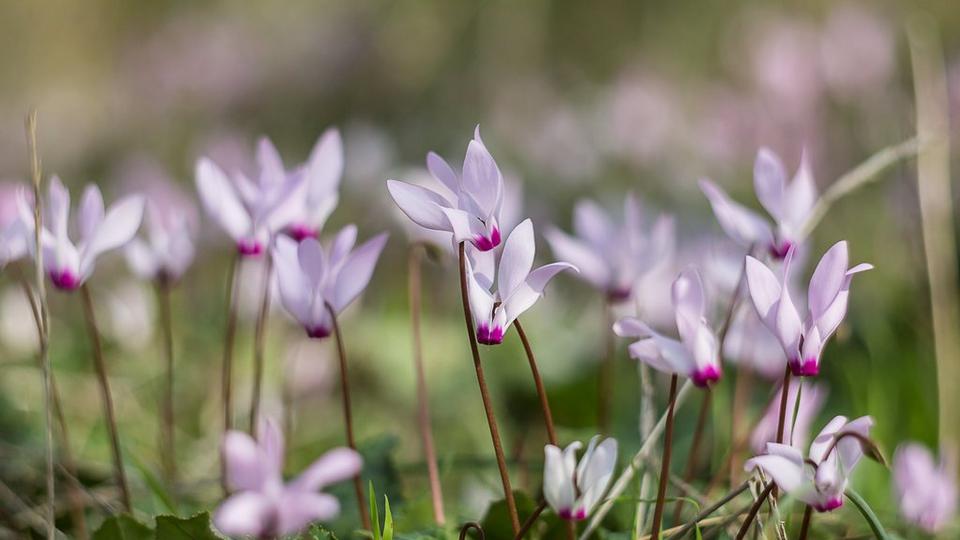
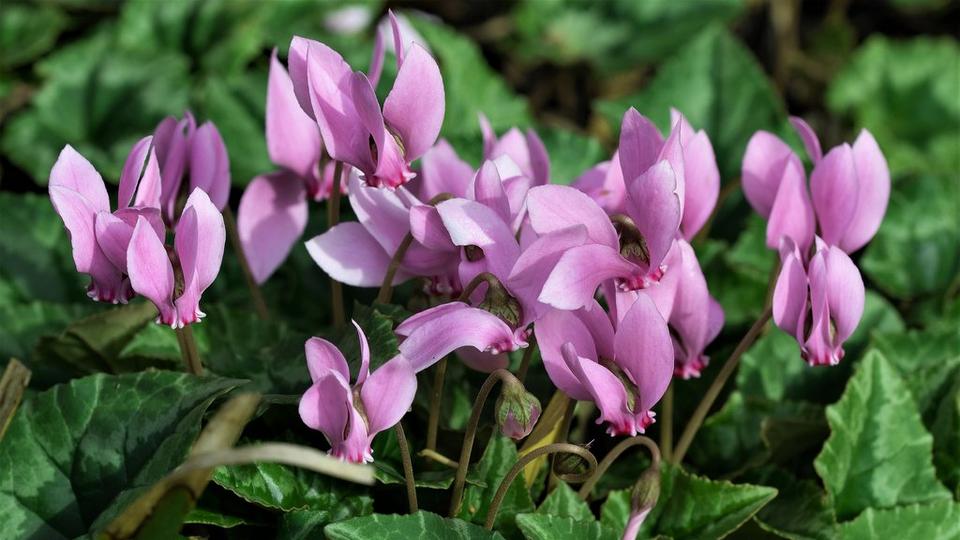
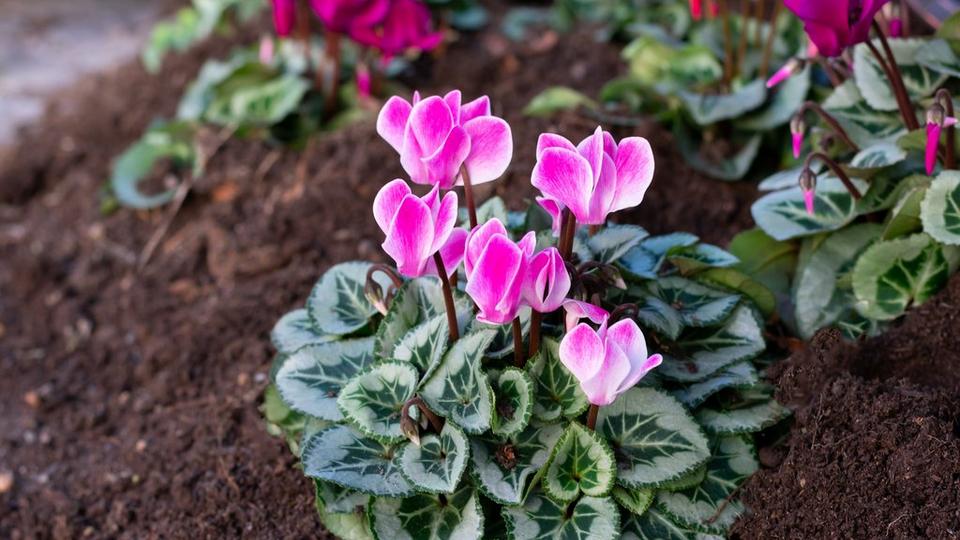
Notable characteristics
Cyclamens are characterised by downward-pointing heart-shaped leaves with silvery markings and upward-facing petals. The flowers come in many colours, from bright red, lavender, vivid purple, deep pink, and near-transparent white. The solitary flowers, supported by twisted, reflexed petals, are often smooth with a lovely frill.
Being a tuberous perennial, Cyclamen Persicum subsides to its thick tubers during summer before regrowing in the fall. All cyclamen types are dormant in summer. They sprout in the autumn, persist throughout the winter, and wither the following spring.
Categories and species of cyclamen
You are probably familiar with the florist’s cyclamen, which enlivens an indoor setup in winter, but this is only one of the varieties. There are over 20 species thriving in the Mediterranean climate with cool, wet winters and hot, dry summers. Some varieties blossom for shorter periods than others, so you want to understand the various types of cyclamen before ordering one. The flowers can be categorised as follows:
- Victoria: Known for its ruffled white petals with red hues at the centre
- Scentsation: An open-pollinated pink or red variety with a strong scent
- Sierra series: Larger cyclamen flowers that bloom in shades of scarlet, purple, pink, white, lilac, or salmon
In terms of species, the following types are the most popular:
- Cyclamen Coum: Its leaves, which can be heart-shaped, rounded, or patterned, burgeon in autumn. Tiny vivid flowers bloom through the foliage around midwinter. Cyclamen Coum varieties are pewter leaf, silver leaf, album, blush, Maurice Dryden, and Rubrum.
- Cyclamen Mirabile: This is a fall-blooming flower with dainty little petals and charming green foliage with silver patterns. In terms of varieties, Tilebarn Jan, Tilebarn Nicholas, and Tilebarn Ann are the most common.
- Cyclamen Heredifolium: Commonly referred to as ivy-leaved cyclamen, this robust species can withstand severe cold, which is why it has naturalised in the Pacific Northwest region. It is one of the easiest to nurture at home, blossoming in pink or white tinge with pink. Varieties within the species include white cloud, Bowle’s Apollo, silver cloud, pewter white, silver arrow, and Nettleton silver.
- Cyclamen Graecum: This species is difficult to grow and doesn’t grow as vigorously as the rest. Nonetheless, it offers spectacular charms of velvety, deep green leaves featuring beautiful patterns. Its small blooms have a sweet fragrance and usually emerge in late summer and autumn. The species has the fewest varieties: Rhodopou and Glyfada.
Propagation
Tubers contain the growing points but are prone to rot and desiccation if cut. For these reasons, gardeners are advised to buy new plants. However, they should be kept away from children and pets as they can be toxic.
Cyclamen care tips
Potted cyclamen is pretty easy to get, but providing the optimal conditions for reblooming can be challenging. Don’t be like most people who treat Cyclamen Persicum as a temporary houseplant. If you have been wondering how to maintain the beauty of this perennial indoor plant, we have got you covered with the following tips:
1. Watering
Watering frequency depends on the location, soil type, and climatic conditions. To keep it healthy:
- Look for slightly acidic, well-drained, and high-quality potting soil. Before you water your cyclamen plant, the soil should be dry to the touch.
- Avoid soggy conditions at all costs.
- When you receive a new plant, get a pot with a few drainage holes at the bottom.
Rainwater or filtered water is okay, but you may mix it with low-nitrogen liquid fertiliser fortnightly until the flowers bud.
Excess water is not suitable for cyclamen leaves and stems, so you must practise bottom watering, i.e., add a small amount of water in a large container and sit the pot within this. The flowers tend to droop if overwatered, and other parts may rot. Preferably, use a narrow-sprouted can to avoid sprinkling water on the foliage. After watering the plants, leave them for one or two hours to let the soil absorb the water. This technique encourages the downward growth of roots.
Follow the above steps weekly and let the soil dry slightly before the next watering session.
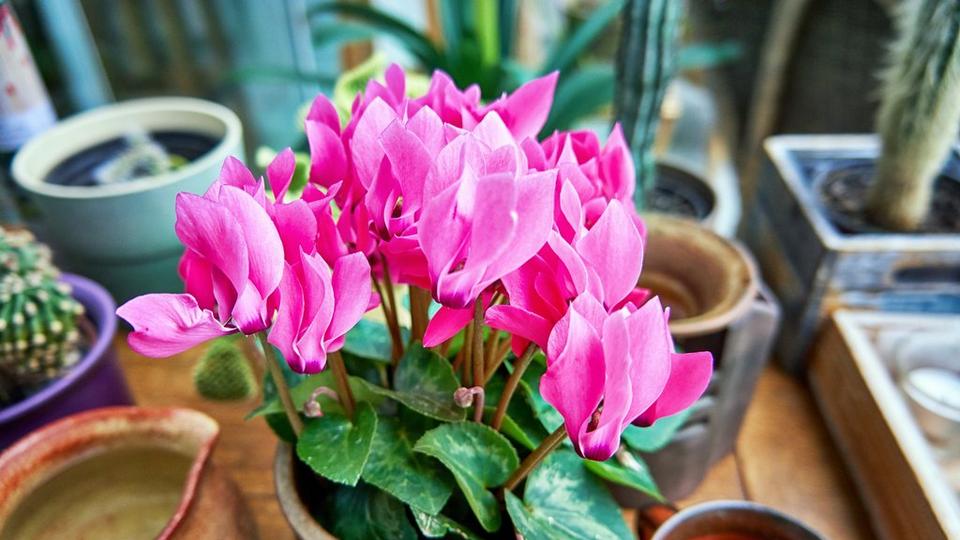
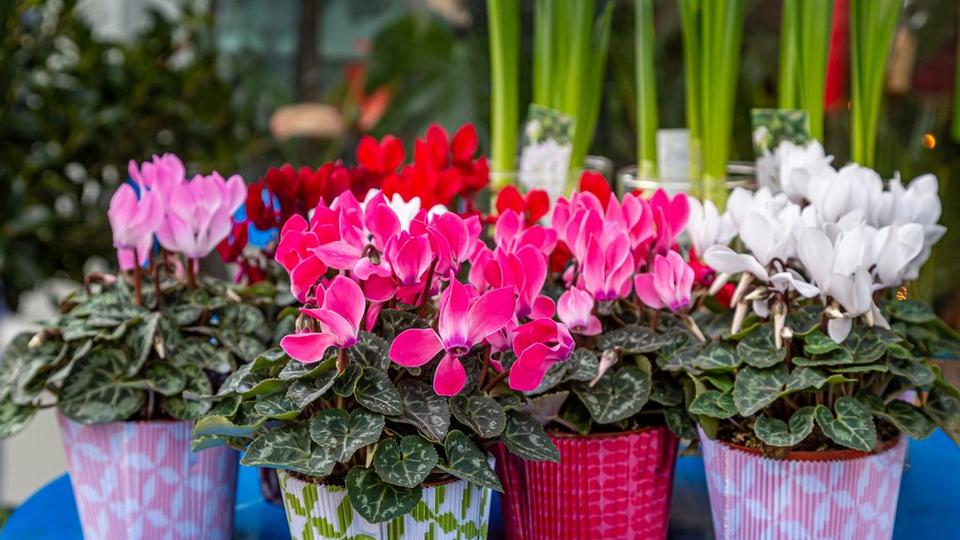

5. Repotting
If the soil takes too long to soak up the water, consider repotting because the roots are probably pot-bound and have outgrown the container. Always put the plant in a container that allows an inch of free space around the tuber. When repotting, ensure the tuber is poking out of the potting mix. Repot every two years and do it during the inactive season with fresh potting soil and a bigger container. Here is the correct procedure to follow:
1 - Add soil to the new pot
2 - Remove the tuber from the old container
3 - Brush the old soil off but do not rinse with water
4.- Put the tuber in the new container and ensure it protrudes 2 inches from the rim
5 - Cover the tuber with fresh potting mix/soil
6 - Look for a shady and dry outdoor area to keep the plant when it’s hibernating
7 - Start watering in mid-September
FAQs
You can increase the relative humidity by placing the potted plant on a tray with water and pebbles. Find a way to prevent the pot from directly contacting the tray water.
After summer, you have to bring the plant back indoors. Do this in autumn before the temperatures turn cold. You may open the windows but don’t allow your house to become chilled.
Cyclamens can rebloom every winter, so there’s no need to ditch the old plant. Encourage new growth by snipping dead stalks out of the base and eliminating dead leaves. Keep the soil dry in the dormancy stage.
Reduce watering over the spring and summer to let the flowers go dormant otherwise the plant will not reflower the following autumn. Never force the plant to blossom year-round, but do not allow it to remain dry so long that it begins to droop.
They are perennials and can live for many years under the right conditions.
